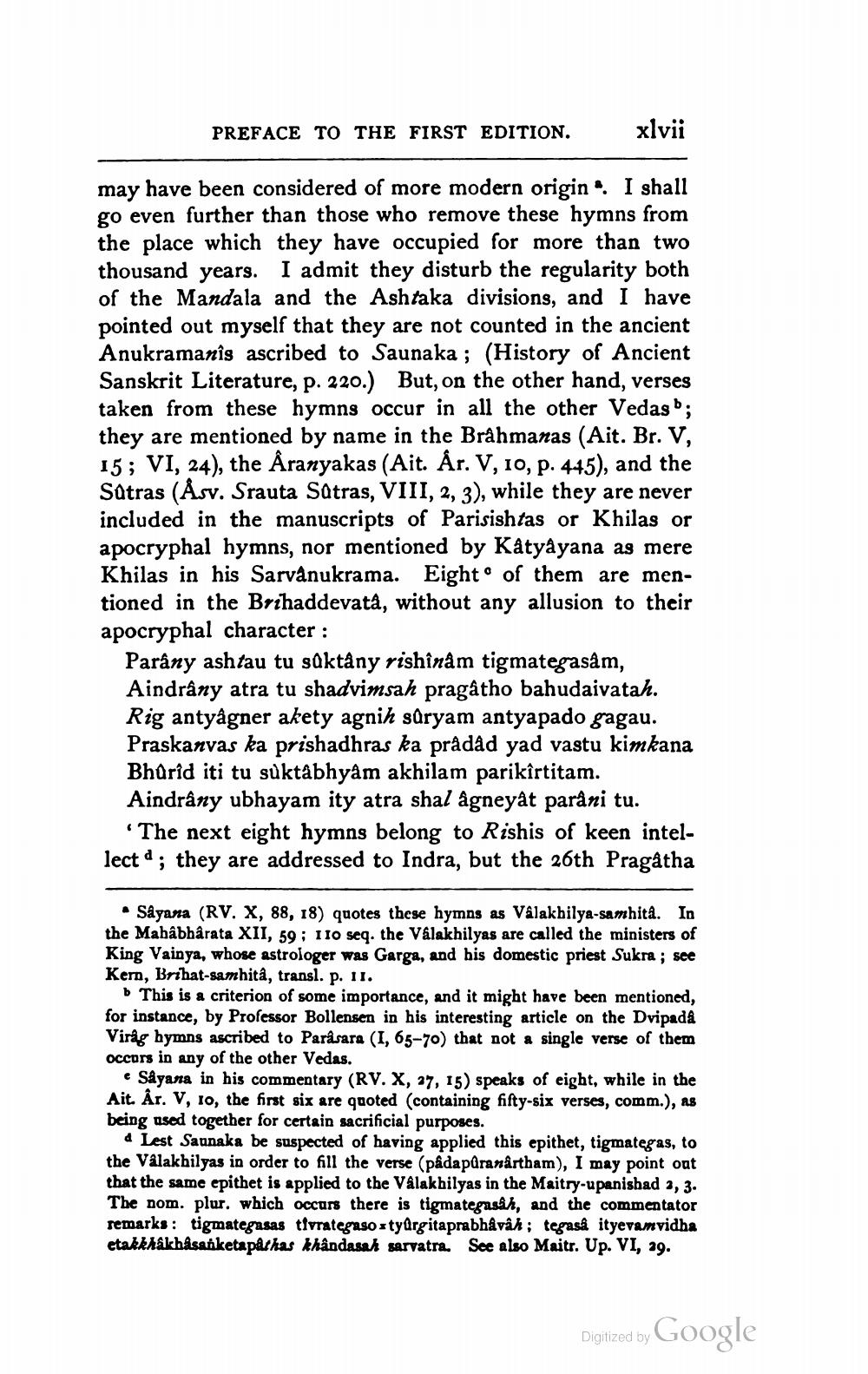________________
xlvii
may have been considered of more modern origin. I shall go even further than those who remove these hymns from the place which they have occupied for more than two thousand years. I admit they disturb the regularity both of the Mandala and the Ashtaka divisions, and I have pointed out myself that they are not counted in the ancient Anukramanîs ascribed to Saunaka; (History of Ancient Sanskrit Literature, p. 220.) But, on the other hand, verses taken from these hymns occur in all the other Vedas"; they are mentioned by name in the Brahmanas (Ait. Br. V, 15; VI, 24), the Aranyakas (Ait. År. V, 10, p. 445), and the Sutras (Åsv. Srauta Sûtras, VIII, 2, 3), while they are never included in the manuscripts of Parisishtas or Khilas or apocryphal hymns, nor mentioned by Kâtyâyana as mere Khilas in his Sarvânukrama. Eight of them are mentioned in the Brihaddevatâ, without any allusion to their apocryphal character:
0
PREFACE TO THE FIRST EDITION.
Parâny ashtau tu sûktâny rishînâm tigmategasâm, Aindrâny atra tu shadvimsah pragâtho bahudaivatah. Rig antyågner akety agnih sûryam antyapado gagau. Praskanvas ka prishadhras ka prâdâd yad vastu kimkana Bhûrîd iti tu suktâbhyâm akhilam parikîrtitam. Aindrâny ubhayam ity atra shal âgneyât parâni tu.
'The next eight hymns belong to Rishis of keen intellect; they are addressed to Indra, but the 26th Pragatha
• Sâyana (RV. X, 88, 18) quotes these hymns as Vâlakhilya-samhitâ. In the Mahabharata XII, 59; 110 seq. the Vâlakhilyas are called the ministers of King Vainya, whose astrologer was Garga, and his domestic priest Sukra; see Kern, Brihat-samhitâ, transl. p. 11.
b This is a criterion of some importance, and it might have been mentioned, for instance, by Professor Bollensen in his interesting article on the Dvipadâ Virág hymns ascribed to Parâsara (I, 65-70) that not a single verse of them occurs in any of the other Vedas.
• Sâyana in his commentary (RV. X, 27, 15) speaks of eight, while in the Ait. Âr. V, 10, the first six are quoted (containing fifty-six verses, comm.), as being used together for certain sacrificial purposes.
d Lest Saunaka be suspected of having applied this epithet, tigmategas, to the Vâlakhilyas in order to fill the verse (pâdapûranârtham), I may point out that the same epithet is applied to the Vâlakhilyas in the Maitry-upanishad 2, 3. The nom. plur. which occurs there is tigmategasâh, and the commentator remarks: tigmategasas tivrategaso - tyûrgitaprabhâvâh; tegasâ ityevamvidha etakkhakhasanketapachas khândasah sarvatra. See also Maitr. Up. VI, 29.
Digitized by Google




